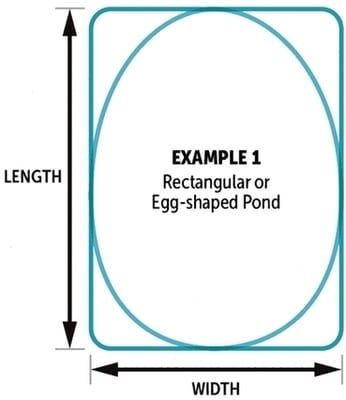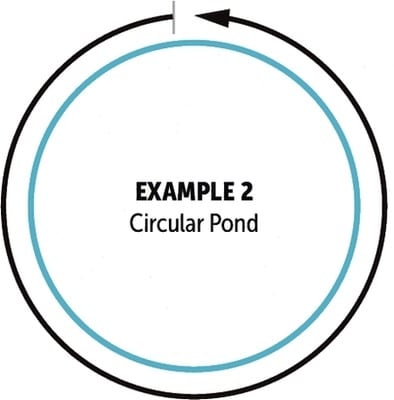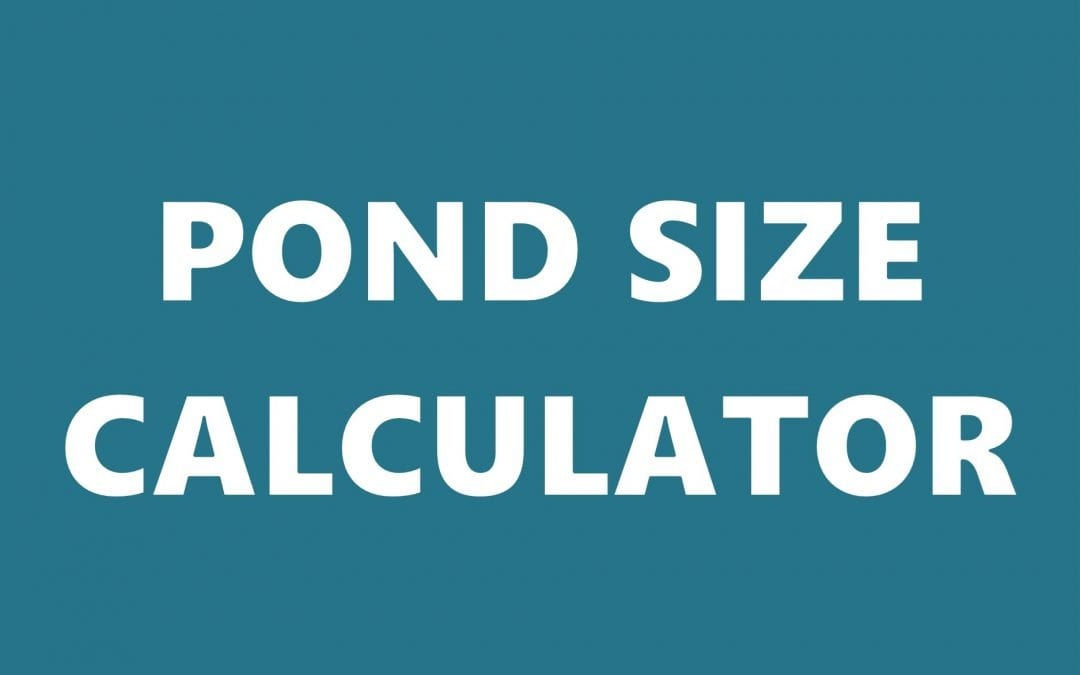Determining the size of your pond
Ponds come in all shapes and sizes. Whatever its general layout, knowing the volume of your pond in “acre-feet” is important to help you determine the best way to maintain it. To figure the surface area of your pond in acres, follow these steps:
- If your pond is rectangular to egg-shaped, multiply its length in feet by its width in feet, then divide that figure by 43,560.
- If your pond is circular, measure the total distance in feet around the shoreline edge, then multiply this number by itself and divide that figure by 547,390.
- If your pond is irregularly shaped, compute its size by using the straight boundary lines of the actual shoreline, multiplying its length in feet by its width in feet and dividing by 43,560.

Example 1: The length of your rectangular pond is 800 feet and the width is 200 feet. Multiply 800’ x 200’ = 160,000 feet, divided by 43,560 = 3.673 surface acres.

Example 2: The total distance in feet around the shoreline of your circular pond is 756 feet. Multiply 756’ x 756’ = 571,536 feet, divided by 547,390 = approximately 1 acre. If the pond has an average depth of 4 feet, you would have a 4 acre-feet pond volume.
Determining the volume of your pond to find the acre-feet volume
- To determine the “acre-feet” volume of your pond, you need to know the average depth of your pond in feet.
- Take depth measurements spaced uniformly over the entire pond.
- Add these together and divide by the number of measurements taken. This will give you the average pond depth in feet.
- Next, multiply the surface area in acres by the average depth in feet.
- The result equals the volume of your pond in “acre-feet”. For example, if your pond is one surface acre with a 4 foot average depth, you would have 4 acre-feet of water (1 x 4 = 4 “acre-feet”).

